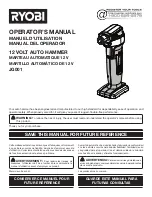
K.
AMMETER RANGE SE LE C TOR C IRCUIT
� - - -
- - - - - - - - - -
-
---, r
- - ·- - - - -
---,
D C
I
:
a m p l i 1 i e r
J I
J
I
1 1
i
3 0 1
I
I
1 1
H i g h
I
I
I i
ran g e
I
I
T 30 1
T 3 0 2
T 3 0 L.
1 1
I
P 3 0 1
I
I I
I
I
T 3 0 3
1 1
T 30 6
I
I
I
I
I
I
L _
I
I
I
-
BV
S c h m it t
I
-
!.0._g�r
_J
+ o u t
A m m et e r r a n g e
s e l e c to r c i r c u i t
F i g u r e 3 1
The wiper arm of potentiometer P30 1 is adjusted to a voltage, equal to
the voltage across R70 caused by the output current when the ammeter
is switched between its ranges.
The "DC ampl ifier" acts as a zero for the difivrence in voltage between
P30 1 wiper arm and R70 . When this voltage changes pol arity, the output
:from the amplifier changes, driving the "Schmitt-trigger" from one state
to the other. For low output currents T305 is conductirq::·, lighting I301 and
for high output currents T306 is conducting, lighting D02.
When T305 is conducting, T30 7 is switched on, shortine; R105+ P105.
The ammeter acts as a voltmeter across R70, so for low output currents
.it has only R104+ P104 as series resistance, giving FSD for low currents .
With high output current T30 7 is switched off and the ammeter series resis
tance is R104+ Pl04+R l05+ P105. This gives a high curren t for FSD .
The "DC amplilier" consists o f a differential input st;, ge T 3 0 1 +T302 .
Further gain is achieved by T3 03. The output stage is an emitter follower
T304.
The "Schmitt-trigger" is of conventional design and needs no explication.
T30 7 is connected as an "inverted switch" for extremely low on resistance.
35
















































